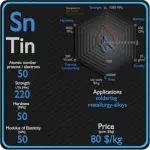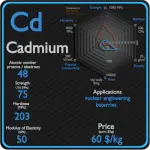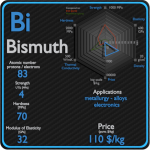This article contains comparison of key thermal and atomic properties of antimony and lead, two comparable chemical elements from the periodic table. It also contains basic descriptions and applications of both elements. Antimony vs Lead.

Antimony and Lead – About Elements
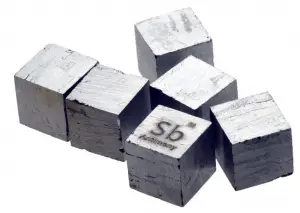
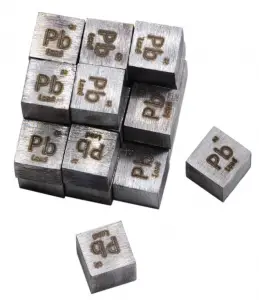
Source: www.luciteria.com
Antimony and Lead – Applications
Antimony
The largest applications for metallic antimony are an alloy with lead and tin and the lead antimony plates in lead–acid batteries. Alloys of lead and tin with antimony have improved properties for solders, bullets, and plain bearings. Antimony can be used in fire retardants for many commercial and domestic products. Antimony trichloride is used in the manufacturing flame-proofing compounds as well as paints, ceramic enamels, glass and pottery. Other uses include ball bearings and mixing with alloys with percentages ranging from 1 to 20 greatly increasing the hardness and mechanical strength of the lead. The capability to strengthen already strong alloys is its largest and most widespread use.
Lead
Lead metal has several useful mechanical properties, including high density, low melting point, ductility, and relative inertness. Lead is widely used for car batteries, pigments, ammunition, cable sheathing, weights for lifting, weight belts for diving, lead crystal glass, radiation protection and in some solders. The largest use of lead in the early 21st century is in lead–acid batteries. The lead in batteries undergoes no direct contact with humans, so there are fewer toxicity concerns. Lead is used in high voltage power cables as sheathing material to prevent water diffusion into insulation; this use is decreasing as lead is being phased out. A lead is widely used as a gamma shield. Major advantage of lead shield is in its compactness due to its higher density. On the other hand depleted uranium is much more effective due to its higher Z. Depleted uranium is used for shielding in portable gamma ray sources.
Antimony and Lead – Comparison in Table
| Element | Antimony | Lead |
| Density | 6.697 g/cm3 | 11.34 g/cm3 |
| Ultimate Tensile Strength | 11 MPa | 17 MPa |
| Yield Strength | N/A | 5.5 MPa |
| Young’s Modulus of Elasticity | 55 GPa | 16 GPa |
| Mohs Scale | 3.15 | 1.5 |
| Brinell Hardness | 300 MPa | 38 MPa |
| Vickers Hardness | N/A | N/A |
| Melting Point | 631 °C | 327.5 °C |
| Boiling Point | 1950 °C | 1740 °C |
| Thermal Conductivity | 24 W/mK | 35 W/mK |
| Thermal Expansion Coefficient | 11 µm/mK | 28.9 µm/mK |
| Specific Heat | 0.21 J/g K | 0.13 J/g K |
| Heat of Fusion | 19.87 kJ/mol | 4.799 kJ/mol |
| Heat of Vaporization | 77.14 kJ/mol | 177.7 kJ/mol |

